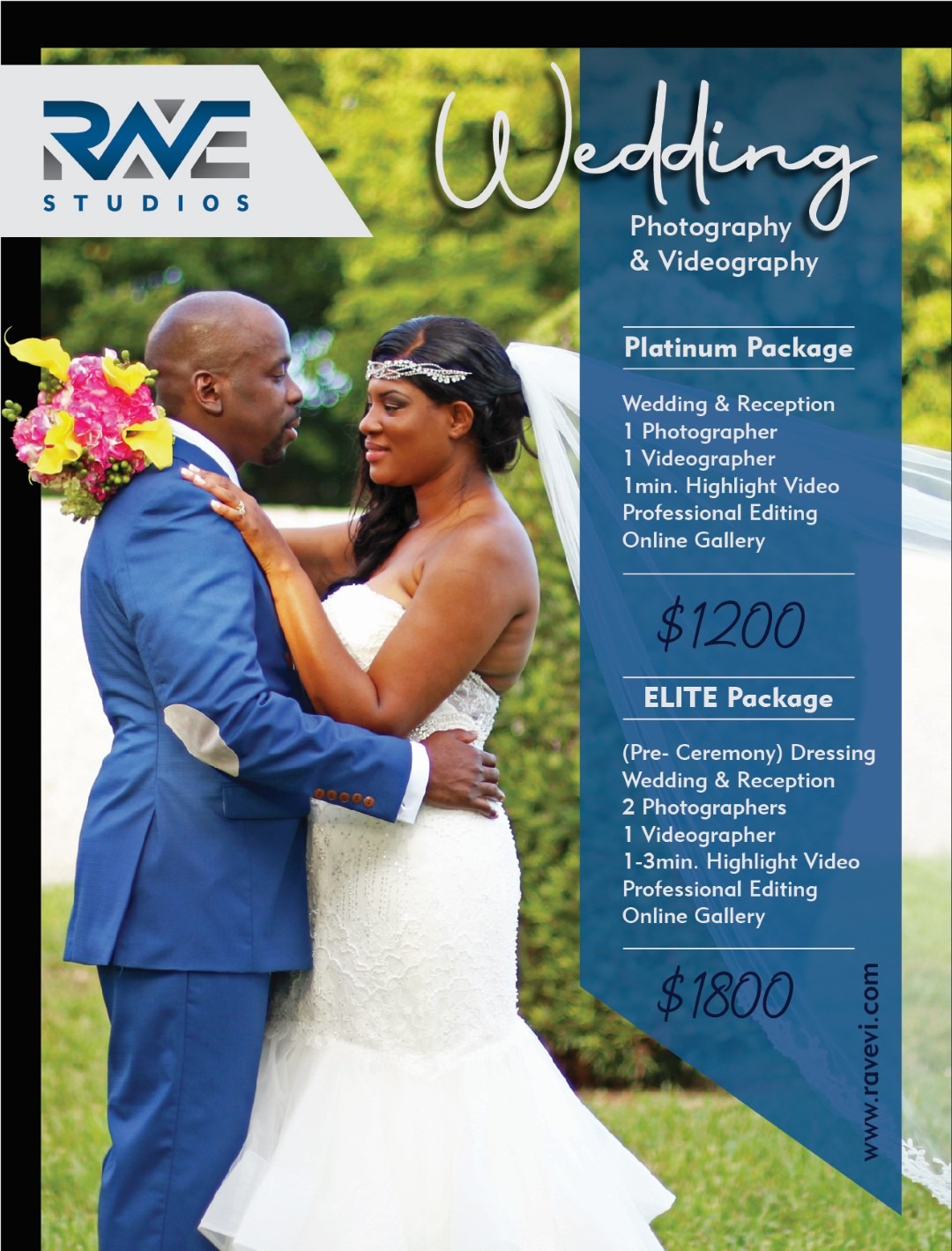Share
Step into a time machine and journey back to the vibrant 70s, where disco balls sparkled, shag carpets were a must-have, and lava lamps created a captivating ambience. Retro interior design trends are making a stylish return, and there’s no better way to embrace this nostalgia than by reviving the iconic 70s home decor.
Let’s delve into the vibrant world of retro interior design, discovering how you can bring the funky, joyful essence of the 70s into your home while channelling your inner disco star and transforming your home into a time capsule that celebrates the golden age of design.
Be Bold and Warm
Decor from the 1970s has a very endearing and upbeat quality. For home décor, the decade was genuinely exceptional, with vibrant hues and striking prints. Embrace the lively colours of the 70s by incorporating these bold and bright hues into your design. Think oranges, yellows, greens, and browns. This decade’s uniqueness stems from its natural, earthy, and warm colour palette. Warm colours and textures instantly make a home feel cosy and inviting, creating a space you’ll never want to leave. Brown and tan tones are key to capturing the 70s vibe. An earthy coat of paint is an affordable way to transform your space while adding moodier lighting can enhance the atmosphere and ambience.
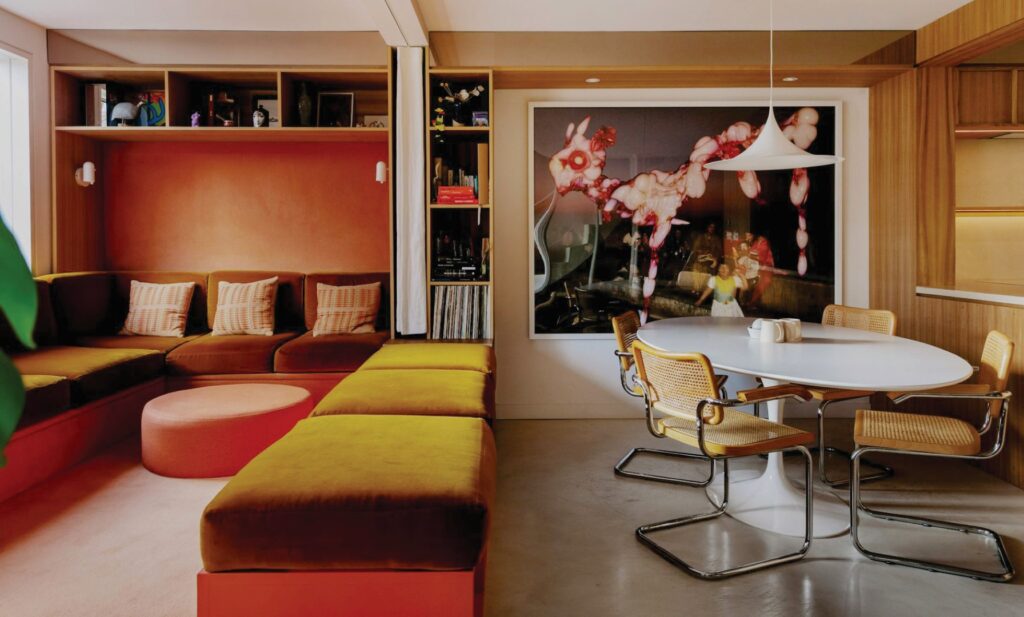
Furnishings and Soft Finishes
Whether it’s an egg chair, a cosy papasan, or the iconic peacock chair, wicker furniture has roots that extend far beyond the 70s. If wicker isn’t your style, a brightly coloured sofa can definitely bring in that funky vibe. The 70s saw an explosion of soft furnishings, offering a wider variety than ever before. Choices ranged from bold, graphic prints to florals and luxurious velvets. Adding a few scatter cushions can transform a modern sofa into a retro masterpiece. If you’re hesitant about wallpaper, bold curtains can be a great alternative. You can also pair curtains with matching or contrasting designs for an even bolder statement.
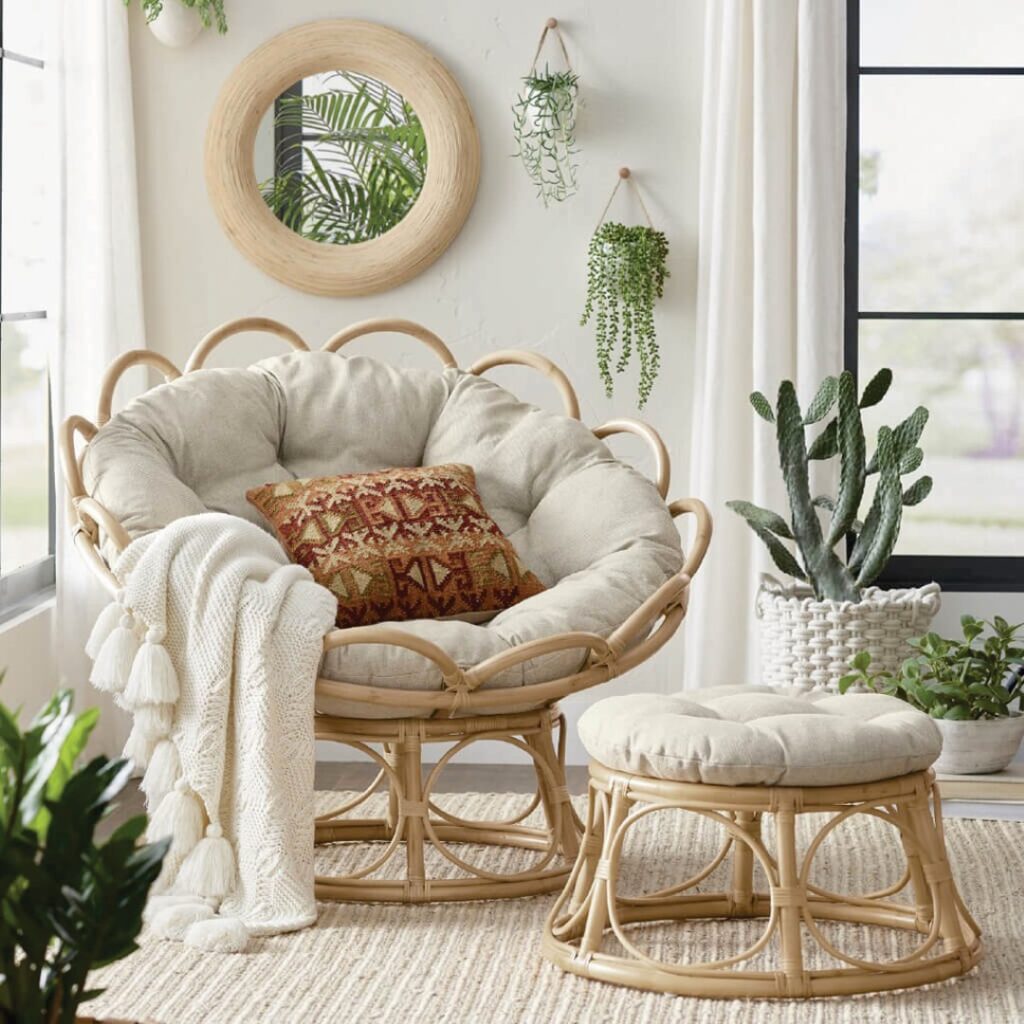
Add A Touch of Shag
In addition to the wooden panelling, shag rugs and elements are a hallmark of the 70’s style homes, bringing a sense of fun and flair to any room. It adds to the cosy and nostalgic feel and creates an opportunity to bring in some funky patterns. These deep-pile carpets, often in vibrant colours, provided a plush, cosy texture underfoot, perfect for lounging. Shag carpets weren’t just about comfort; they also made a bold visual statement, turning floors into a room’s focal point. Whether paired with wood panelling, funky furniture, or psychedelic wallpaper, shag carpets created the ultimate groovy atmosphere that defined the decade.
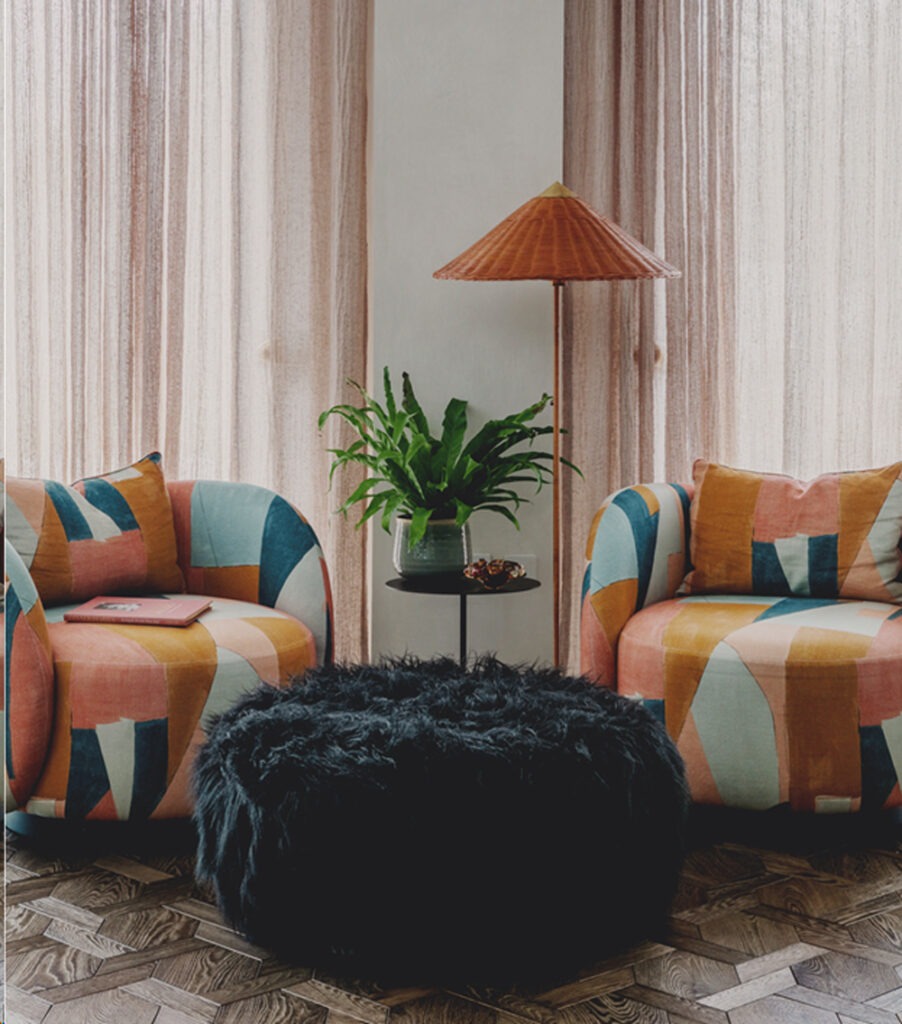
Have Fun with Lights
Lighting was big in the 70s with all sorts of crazy designs. When it comes to lighting, think diffused glass shades in bold colours, mushroom-shaped table lamps, Sputnik chandeliers, rattan shades, or white milk glass, accented over a dining table, in the centre of a living room, or over a stairwell. These lighting concepts create an impact and scream retro. Lights that can retract up or extend down are a useful addition when eating to create that authentic mood.
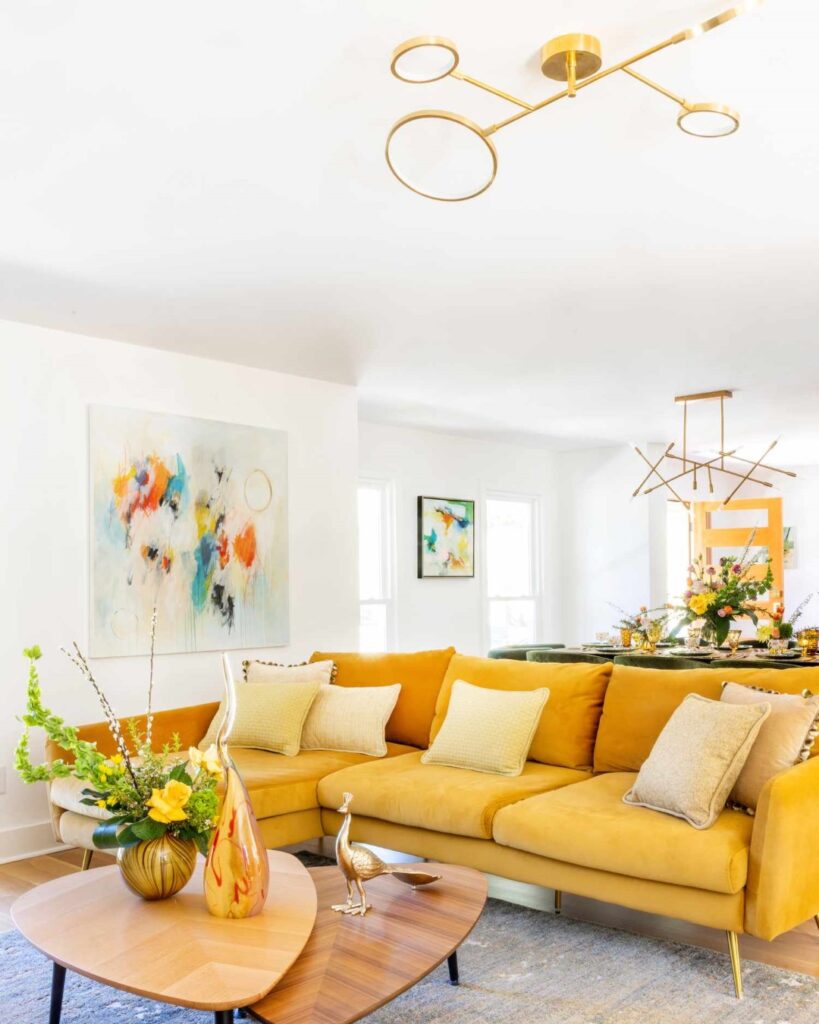
Plants of Course
In the 1970s, houseplants became a defining element of interior design, reflecting the era’s love for nature and vibrant, lush atmospheres. Popular plants included spider plants, ferns, philodendrons, and rubber plants. These plants were often displayed in macramé hangers, large floor pots, or as part of elaborate indoor gardens. Adding plants will bring texture and a touch of nature to your retro space. The lovely green pop can also add a lot of depth to even the smallest of spaces.

Festive 70’s interior design was a delightful blend of bold colours, eclectic patterns, and natural textures that set a cheerful tone that was both lively and inviting. The era was known for its fearless mix-and-match approach to patterns, from psychedelic wallpapers to geometric prints, resulting in a dynamic and personalized aesthetic. This exuberant style made homes perfect for hosting festive gatherings, where the decor itself seemed to join in the celebration.


